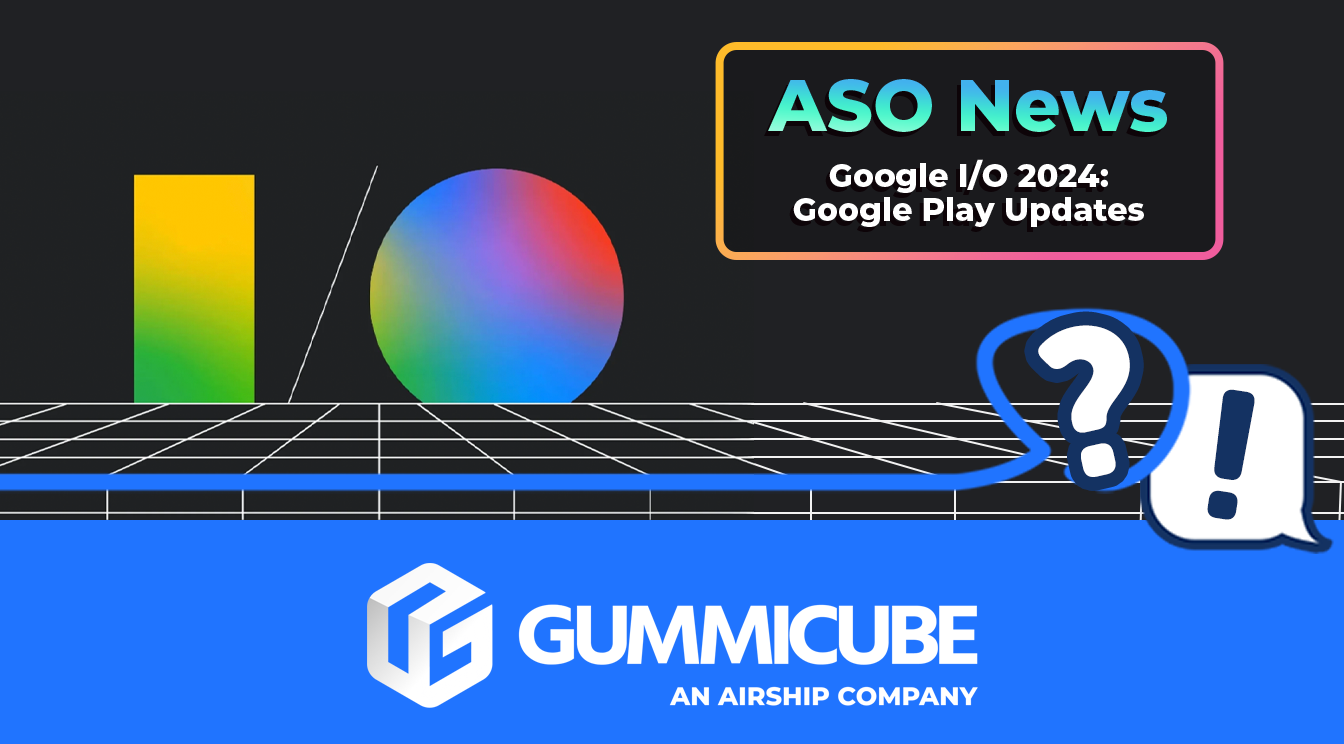Google App Deletion & Policy Changes
July 24th, 2024


by Anh Nguyen
COO & Co-Founder at Gummicube, Inc
Google Play App Deletion & Policy Changes
Google’s continuous refinement of the Play Store is a clear sign of their intent to limit the amount of spam (or outright fraud) users experience. While historically the number of fake Google Play apps have been higher than that of the App Store, Google has taken several steps to increase the likelihood of quality apps being surfaced to the top of its marketplace in recent years.
From app removals to ensure data protection to last year’s new app testing requirement, Google is no doubt placing an emphasis on improved user experiences. Now, a new round of removals is on the horizon, and developers only have a few weeks to prepare.
Google Play Policy Updates
Google announced that it will soon update its Spam and Minimum Functionality policy in an effort to curb the number of apps that possess “limited functionality and content”. This means mass deletion is coming for apps that, according to Google, house very little content and do not provide an engaging user experience. Under this classification we can find:
Text only & PDF file apps
Static wallpaper apps
Apps that don’t install
Apps that install, but don’t load
Apps that load, but are unresponsive
Apps that are “designed to do nothing”
This latest update follows their July 17 Google Play announcement, mentioning several new criteria established in their different policies. While the new Spam and Minimum Functionality policy won’t entirely prevent low-quality apps from being published, it can act as a deterrent. Additionally, the policy change arrives close to the launch of Android 15, which promises to house on-device AI that can “analyze behavioral signals related to sensitive permissions and interactions with other apps and services”, potentially making it faster to detect spam or fraud.
What Google’s New Policy Means for Apps
The deletion of lower-quality apps makes for an overall better user experience across Google Play, but what does that mean for developers whose apps don’t fall into that category? How will their performance be affected and more importantly, how can they capitalize on the new real estate?
The mass deletion of apps inevitably opens up opportunities for developers to occupy the space left behind by apps deemed no longer compliant. If we take the example of wallpaper apps, an app simply offering an image gallery may fall under Google’s new classification as a static user experience, ultimately making it non-compliant. If this app were to be ranked at #10 for the search term “wallpaper apps”, it would open up the position for another one to potentially move up in rankings once removed.
That being said, it is unlikely Google will mass-delete every “wallpaper app”, considering there is an entire personalization category of apps which provide users with resources to adjust their wallpaper, homescreen and more. As has always been the case, these new guidelines will allow Google to cull any apps they deem as low quality, providing little else than an image dump - particularly if the app requests extensive and unnecessary device permissions that appear to have fraudulent ends in mind.
The new guidelines also mean quality standards will increase across the board. With the introduction of Google’s aforementioned AI quality-checker, the timeframe between a low quality app being published and detected may decrease substantially making it harder for those to remain on the Play Store. Additionally, it will be more important than ever to monitor Android Vitals to ensure an app doesn’t reach or approach the threshold that can negatively affect it’s Play Store standing. For example, an app’s core features and experience may fall in line with what Google accepts, but frequent crashes can quickly have a developer meet Google’s disciplinary gavel. Apart from housing an engaging experience, developers must monitor their vitals to ensure that the experience is seamless and uninterrupted for the duration of the app lifecycle.
How App Quality Affects Your ASO
We mentioned how Google’s new on-device AI and failing to monitor Android Vitals may get an app kicked off the Play Store, but what if Google hasn’t detected it yet? It should be safe, right? Well… not exactly. Chances are an app’s performance is already seeing the negative effects of a poor user experience before getting removed from Google Play.
Users who come across unfixed errors and crashes are likely to delete the app from their devices. App deletion is a key quality indicator for Google so the more users delete an app, the more likely it will not be served at the top of search results nor considered for features or Promotional Content.
App ratings and reviews also play a tremendous role in App Store Optimization (ASO) as they can directly influence conversion rates. Apps with a below 4-star rating are less likely to be perceived as having quality experiences, and as a result, may attract fewer users to tap / install, lowering placements in search and category rankings. Lower ratings also affect your chances of getting featured in Google Play.
Google Play Policy Changes & Compliance
Google’s announcement of criteria for upcoming deletions is another step in its continuous stride towards improving user experience, both on the Play Store itself and within the apps it offers to users. While the updates to Spam and Minimum Functionality policy create new opportunities for developers of quality apps to occupy the space left behind by removed apps, it also acts as a warning for existing developers to stay on their toes about possible disruptions to the quality of their in-app experiences.
App developers that may fall under this new criteria – particularly when automatically evaluated by an AI, rather than a subjective discussion with a review representative – will need to ensure their product offering may not be seen as low quality, spammy or fraudulent. This sort of goes without saying since every developer wants to have a product offering their users love, but being mindful of what Google (not just users) constitutes as poor quality is key. Seemingly innocuous things like not-quite-right App Content declarations and unnecessary API permission requests may cause a flag that ends up with an app being automatically removed.
How the mass deletion will unfold in the coming weeks is yet to be seen, but for now, developers are best off constantly monitoring their Android Vitals, user feedback, Google’s ever-changing guidelines and of course their ASO strategy. This helps ensure they’re best positioned to perform both inside and outside the app.
Need help with your ASO? Get in touch with the ASO experts at Gummicube today!
Similar Articles

Posted on July 31st, 2024
Google continues to incorporate even more ways to increase discoverability across the Play Store. In this ASO News article we'll go over the newest updates, covering App Highlights, Curated Spaces, and all new personalized Game Recommendations

Posted on May 16th, 2024
The new Google Play has arrived. With Google I/O 24 come announcements to changes to the Play Store layout, native tools, and monetization. Learn what to expect from the latest changes and prepare your app marketing strategy.

Posted on April 22nd, 2024
WhatsApp & Threads are no more. Apple has been forced to remove Meta’s messaging and social platform from China amid “national security” concerns brought up by the Chinese government. Read more in our latest ASO Weekly.





